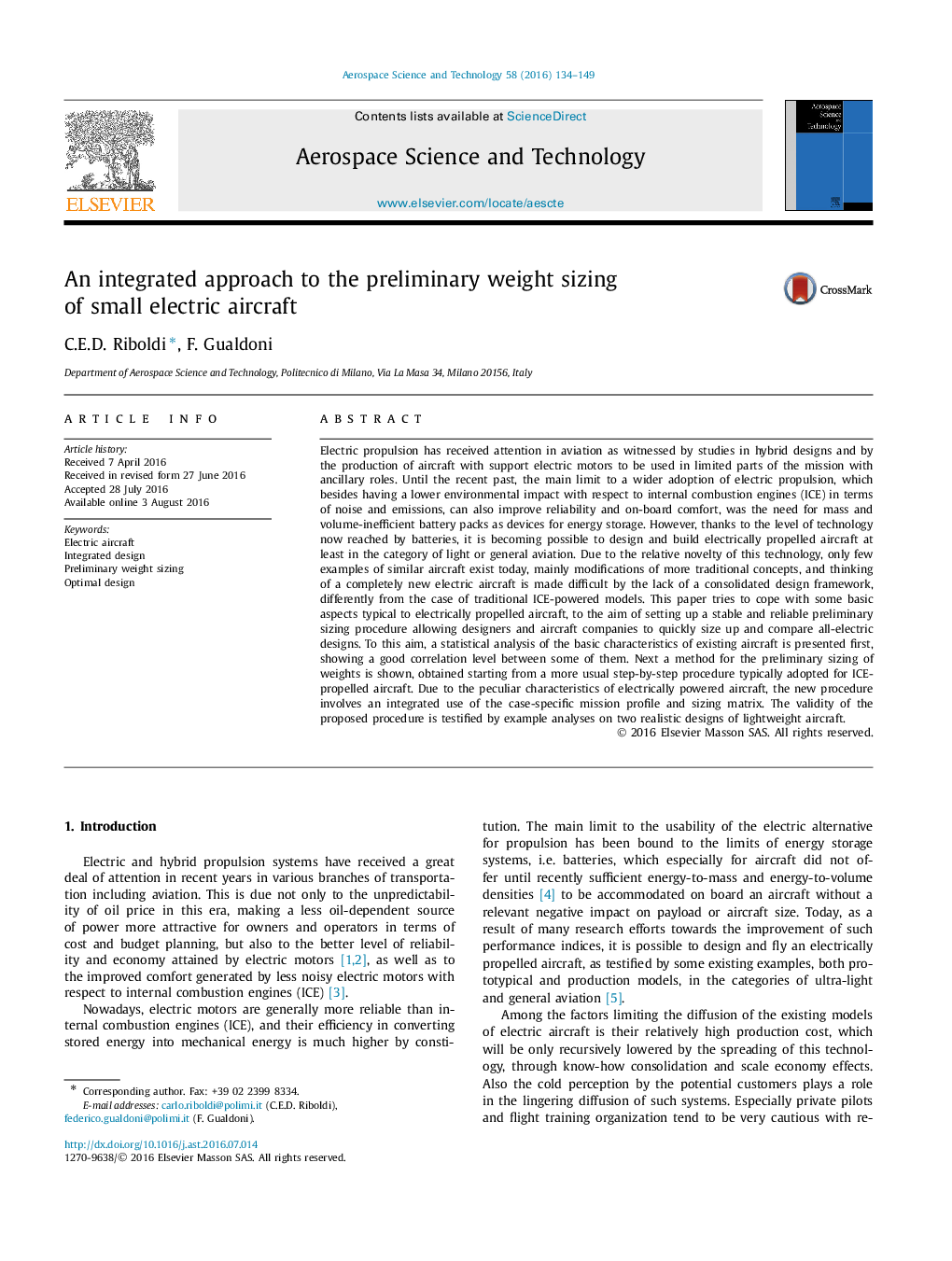| Article ID | Journal | Published Year | Pages | File Type |
|---|---|---|---|---|
| 1717523 | Aerospace Science and Technology | 2016 | 16 Pages |
Electric propulsion has received attention in aviation as witnessed by studies in hybrid designs and by the production of aircraft with support electric motors to be used in limited parts of the mission with ancillary roles. Until the recent past, the main limit to a wider adoption of electric propulsion, which besides having a lower environmental impact with respect to internal combustion engines (ICE) in terms of noise and emissions, can also improve reliability and on-board comfort, was the need for mass and volume-inefficient battery packs as devices for energy storage. However, thanks to the level of technology now reached by batteries, it is becoming possible to design and build electrically propelled aircraft at least in the category of light or general aviation. Due to the relative novelty of this technology, only few examples of similar aircraft exist today, mainly modifications of more traditional concepts, and thinking of a completely new electric aircraft is made difficult by the lack of a consolidated design framework, differently from the case of traditional ICE-powered models. This paper tries to cope with some basic aspects typical to electrically propelled aircraft, to the aim of setting up a stable and reliable preliminary sizing procedure allowing designers and aircraft companies to quickly size up and compare all-electric designs. To this aim, a statistical analysis of the basic characteristics of existing aircraft is presented first, showing a good correlation level between some of them. Next a method for the preliminary sizing of weights is shown, obtained starting from a more usual step-by-step procedure typically adopted for ICE-propelled aircraft. Due to the peculiar characteristics of electrically powered aircraft, the new procedure involves an integrated use of the case-specific mission profile and sizing matrix. The validity of the proposed procedure is testified by example analyses on two realistic designs of lightweight aircraft.
